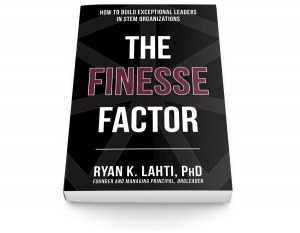
If your company doesn’t already have a chief data officer (CDO), there is a good chance it could be a topic of discussion. Why? According to Gartner, the office of the CDO will be a crucial function similar to IT, finance, HR and business operations in 75% of large companies by 2021. Although the CDO role is relatively new (it first appeared in a company 17 years ago), the Gartner statistic indicates that the role is a vital one. In order to better understand its evolution and impact, take a look at views of the CDO role by organizations such as IBM and NewVantage Partners as well as Gartner.
Major Responsibilities of the CDO
While there is general agreement, business research still shows some variation in the major responsibilities of the CDO role.
C.J. Nakamura, the global head of the Enterprise Information Management organization at IBM’s global chief data office, identified five major responsibilities of the CDO in his presentation at the Enterprise Data World Conference:
- Development of an enterprise data strategy that aligns with the business strategy
- Data governance and management
- Data analytics
- Data architecture
- Creation of a data culture in the organization
For clarification, data analytics refers to the process of examining data sets to draw conclusions about the information they contain, especially with the aid of systems and software. Data architecture is a set of rules, policies and models that determine what kind of data is collected and how it gets stored, processed and utilized.
In its 2018 data and innovation survey of CDO and non-CDO executives, NewVantage Partners revealed these as the primary responsibilities of the CDO:
- Development of an overall data and analytics strategy for the organization
- Coordination and leadership of data initiatives across the organization
- Regulatory compliance
- Creation of new sources of revenue
Gartner’s annual CDO survey includes CDOs, Chief Analytics Officers or the equivalent of these two as respondents. In its third annual survey, Gartner identified the following CDO responsibilities:
- Enterprise data strategy
- Data management and analytics
- Data science
- Digital transformation
Data science is a universally used term that has changed with time and technology. Twenty-five years ago, data science referred to gathering and cleaning datasets then applying statistical methods to that data. Currently, data science is a field that encompasses data analysis, data mining, predictive analytics, business intelligence and machine learning.
Digital transformation is the integration of digital technology (computer-based solutions, algorithms and applications) into all areas of a business resulting in fundamental changes to how a business operates and delivers value to customers. It’s also a culture shift that requires organizations to continually challenge the status quo.
The Impact of the CDO
If the CDO is getting more attention, it’s natural to be curious about the impact of the role. In general, CDOs that are business-oriented with their data and analytics (DA) teams and balance tactical with strategic approaches are more likely to produce value for their organizations. Findings from Gartner’s fourth annual CDO survey show:
- Although less than 10% of CDOs currently use objective measures of financial value for key data assets, those that do report better organizational performance than their peers.
- This superior organizational performance includes translating customer and business needs into high-value products and services.
- Successful CDOs are using emerging digital trust technologies (e.g., artificial intelligence and machine learning) to deliver superior DA team effectiveness and organizational performance.
- CDOs reporting higher levels of maturity for DA programs are more likely to report high levels of overall organizational performance.
- CDOs using machine learning more often report superior organizational performance such as year-over-year revenue growth compared to competitors and peers.
Incidentally, digital trust underlies digital interactions by assessing and quantifying whether an entity is who or what it claims to be and that it will behave in an expected manner. Machine learning deals with getting computers to act without being explicitly programmed. It falls under the umbrella of artificial intelligence.
CDO Obstacles
Like any executive role, the CDO has challenges to overcome. The biggest challenge is a people and culture issue. Specifically, it is helping the organization adapt to change regarding data utilization. NewVantage Partners and Gartner singled this out as a formidable roadblock.
A second challenge is the need for a shared understanding of data as a business asset. This includes establishing fluency in a common language across the enterprise regarding data, analytics and business results.
Attracting and retaining top talent is a priority. Building a productive and credible DA team does not happen overnight and neither does the work environment that inspires them to stay.
The CDO Over Time
The CDO role has reported into a variety of areas over the years. This includes finance, IT, marketing and R&D. As the role has become more established, where it sits in the org chart has shifted. The fourth Gartner CDO survey shows 30% of CDOs report directly to the CEO, 17% to the CIO, 15% to the COO, 5% to the CTO and 4% to the CFO.
Even if the CDO does not report into the CIO, the relationship between these two is a key one. Given the nature of the roles, they should be consistent collaborators.
The CDO role has evolved in its relatively short lifespan. Nakamura emphasized that earlier CDOs focused largely on governance and analytics. He believes the role going forward will be more about data monetization.
The Gartner Research Board takes it one step further as it describes CDO 4.0. In the board’s view, CDO 1.0 focused on data management. CDO 2.0 embraced analytics. CDO 3.0 is heavily involved in digital transformation. The mindset of the fourth iteration of the CDO should transition from focusing on DA projects and programs to driving a product-centric organization. Specifically, CDO 4.0 will concentrate on products and on managing profit and loss instead of solely driving DA projects and programs.
Some executives have questioned the longevity of the CDO role. If you consider how the scope and reporting relationships have changed since it first appeared in the corporate hierarchy, you have a strong indication of the role’s permanence.
________________________
Ryan Lahti is the managing principal of OrgLeader and author of The Finesse Factor: How to Build Exceptional Leaders in STEM Organizations. Stay up to date on Ryan’s STEM organization tweets here: @ryanlahti
(Photo: Excellent Management is Critical to Big Data Success, Flickr)

